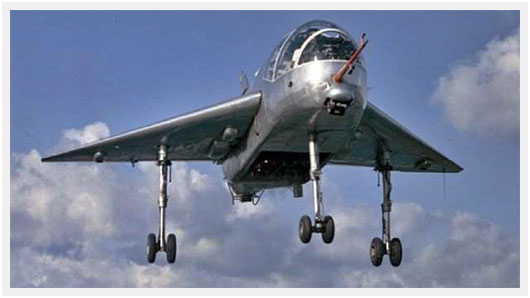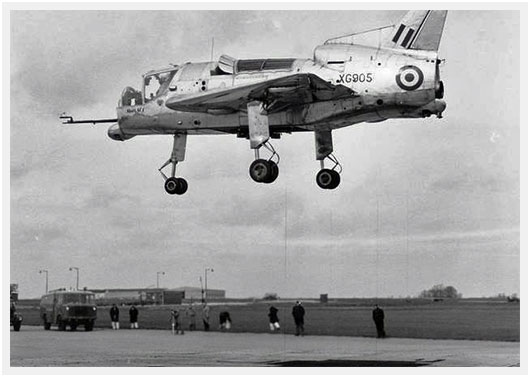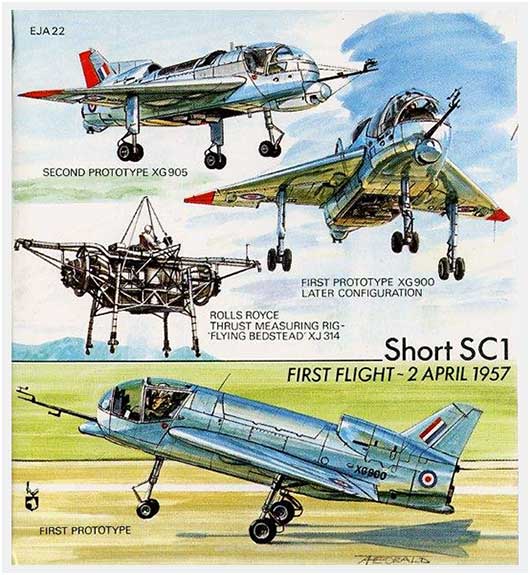Poll: Awesome Or Ugly? The 5 Engine, Short SC.1 VTOL (1950's)
 Thursday, May 16, 2013 at 07:09AM
Thursday, May 16, 2013 at 07:09AM  Short SC.1 - Britain's first VTOL demonstrator aircraft - first flown in 1957 (1958 VTOL)
Short SC.1 - Britain's first VTOL demonstrator aircraft - first flown in 1957 (1958 VTOL)
I admit that I'm fascinated by experimental military aircraft from the 1950's... it was such an incredible time of let's learn everything we can! This unusual looking jet, the Short SC.1, is definitely one that fascinates me. It's Britain's first VTOL testbed, built by Short in Belfast in the last 1950's.
With a delta wing, fixed landing gear and awesome 'spaceship-of-the-future' bubble windshield, the SC.1 was first built with just one centerline mounted Rolls Royce RB108 turbojet engine to allow for conventional takeoff and landing tests. The first flight of this version was on April 2, 1957. The 2nd and only other SC.1 was fitted with four more RB108's mounted vertically in the middle of the fuselage and made its first tethered vertical flight on May 26, 1958. By October of 1958 it had made its first completely free vertical flight. The first vertical to forward-flight transition was made in 1960.
 With fixed landing gear and 5 turbojet engines, the SC.1 was a very unusual jet!
With fixed landing gear and 5 turbojet engines, the SC.1 was a very unusual jet!
The SC.1 had a remarkable career as a VTOL testbed and both examples remain today, the first aircraft on display at London's South Kensington Science Museum and the second at Ulster Folk and Transport Museum in Northern Ireland. However, it is important to note that the second aircraft did crash in 1963 due to a control malfunction killing the pilot J.R. Green. The aircraft was rebuilt and testing continued thru the late 1960's. All SC.1 testing ended in 1971.
The SC.1 provided much valuable data on vertical flight and control, tho the use of 4 vertically-mounted engines for lift and just one for forward thrust proved to be an inefficient method... the Hawker Siddeley P.1127 (predecessor to the Hawker Harrier) first flown in 1960, proved that one large engine could be used to provide vectored thrust for both vertical and forward flight.

I'm voting 'awesome' in the poll, but what do you think of the Short SC.1?
 Martt |
Martt |  Post a Comment |
Post a Comment | 













































































Reader Comments